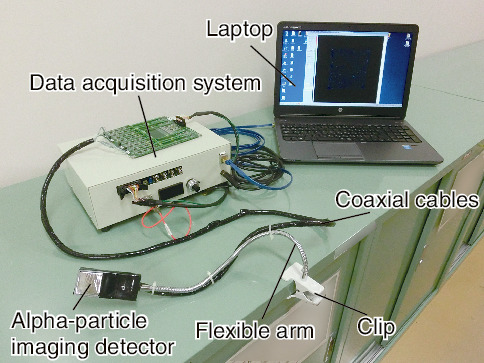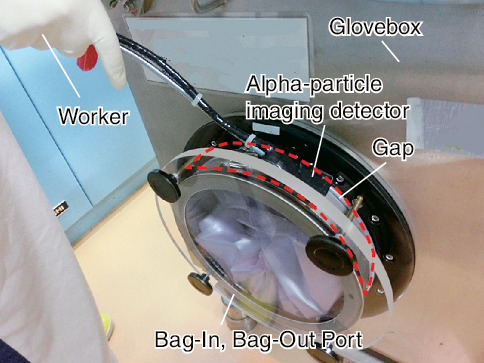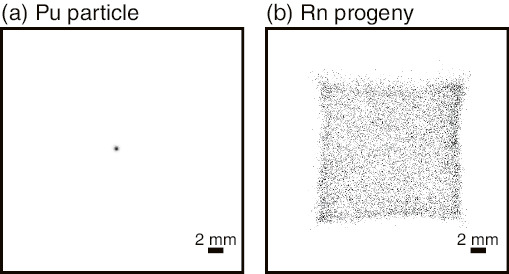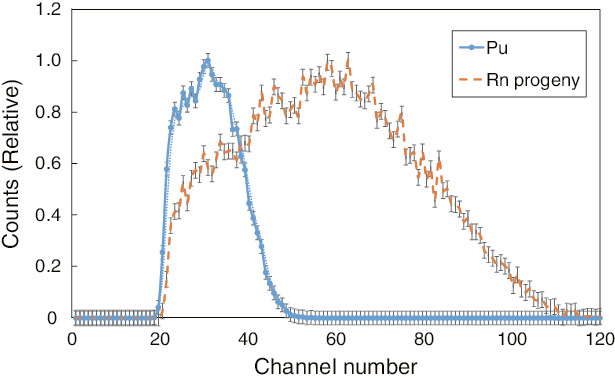
Fig.1-15 The developed small and portable position-sensitive α-particle detector

Fig.1-16 Appearance of measurement by the equipment

Fig.1-17 Measured 2-dimensional distributions of α particles: Pu sample (a) and Rn progeny (b)

Fig.1-18 Energy spectra of the Pu sample and the filter of Rn progeny (the horizontal axis corresponds to α-particle energy)
When decommissioning nuclear facilities such as the TEPCO’s Fukushima Daiichi NPS, a lot of solid wastes will be produced. Surface contamination on these wastes should be measured for disposal. It is necessary to measure not only β and γ radionuclides, but also α radionuclides such as plutonium (Pu) isotopes. Since the range of α particles in air is approximately 4 cm, a ZnS(Ag) survey meter, which is an α-particle detector, should be brought as close as possible to the contaminated area. However, it is difficult to measure the surface contamination in narrow spaces of solid waste and equipment using a ZnS(Ag) survey meter. Such materials must be cut for measurement, but certain materials can be impossible to cut. moreover, radon (Rn) progeny exist and emit α particles such that Pu and Rn progeny should be distinguished.
Therefore, we developed a small and portable position-sensitive α-particle detector (Fig.1-15). The detector part comprises a ZnS(Ag) scintillator with a thickness of 10 mg/cm2, a light guide, and a photosensor (silicon photomultiplier array). The size of the detector part was 26 mm × 26 mm × 15 mm, and its thickness was ˜1/5 that of the ZnS(Ag) survey meter. Fig.1-16 shows the appearance of the measurement of equipment (Bag-In/Bag-Out Port) using our developed detector. Our detector was confirmed to be able to perform direct measurement within a narrow space.
Our developed detector obtained the 2-dimensional distribution and energy spectra of α particles for discrimination of Rn progeny. Fig.1-17 shows the measured 2-dimensional distribution of α particles and Fig.1-18 shows the energy spectra of the Pu sample and the Rn-progeny filter. The α particles for Pu were distributed as a spot, whereas they were uniformly distributed for Rn progeny. In Fig.1-18, both spectra confirmed different channels. This is because the α-particle energies are 5.5 MeV from 238Pu and 5.15 MeV from 239Pu, whereas 214Po, which is dominant among Rn progeny, emits 5.5 MeV α particles. From there results, Pu and Rn progeny should be distinguished by our developed detector.
This work was supported by the Japan Society for the Promotion of Science (JSPS) KAKENHI Grant-in-Aid for Young Scientists (B) (No.15K21618).